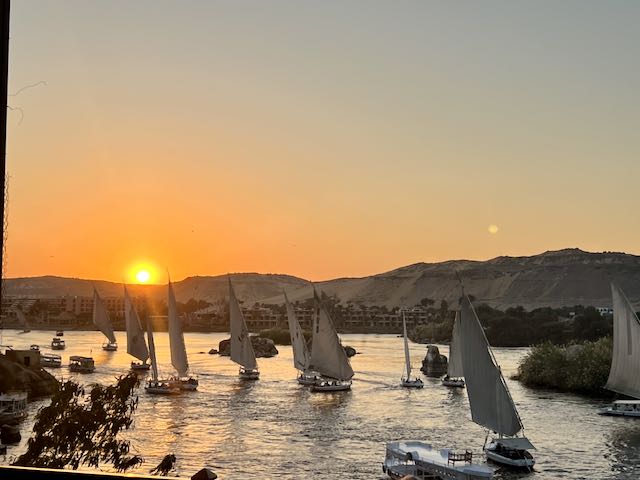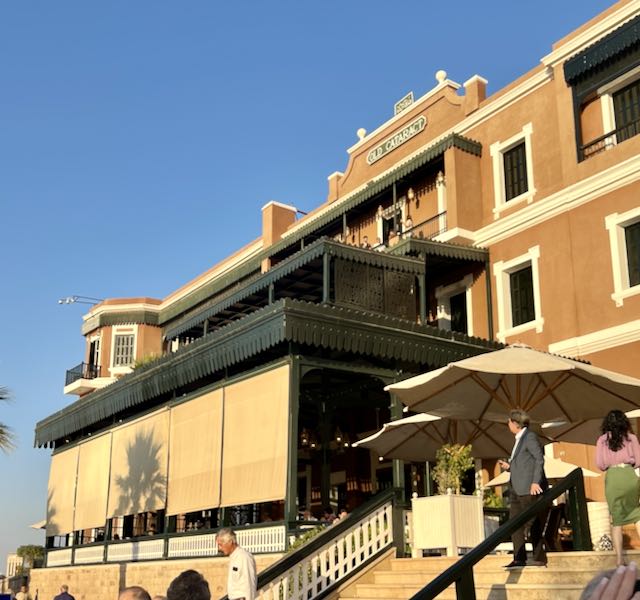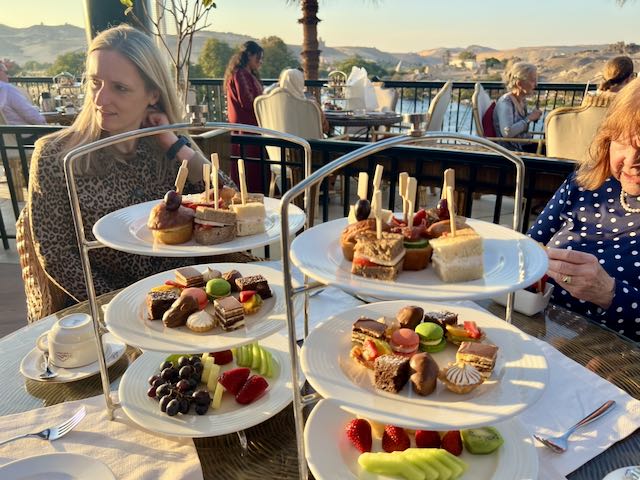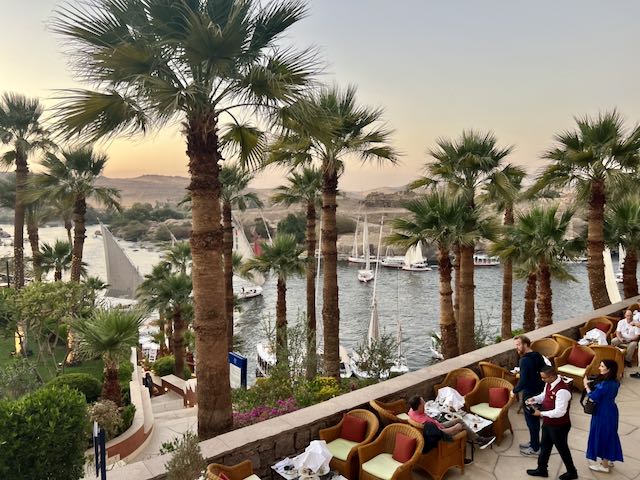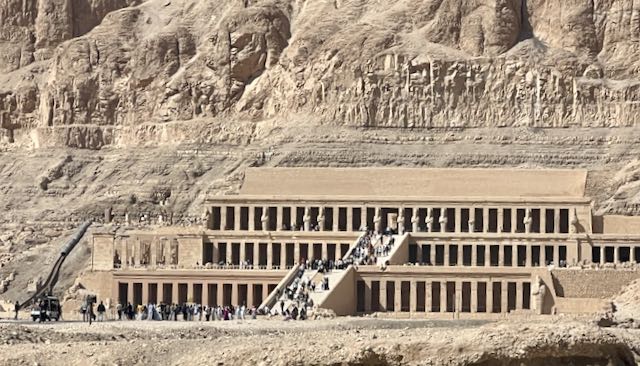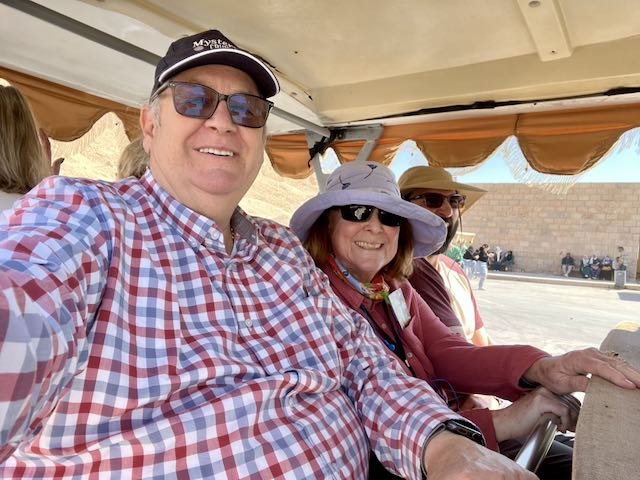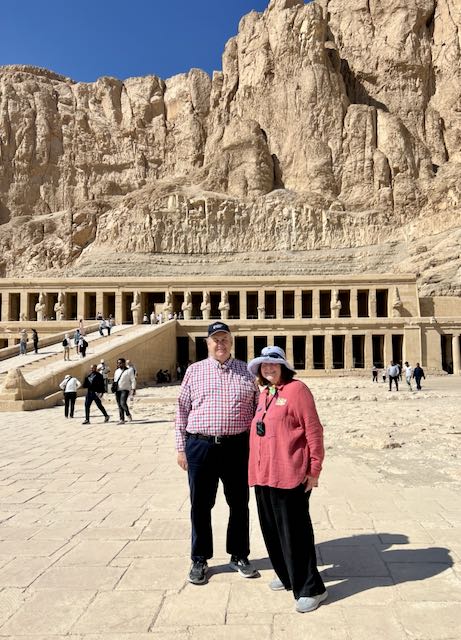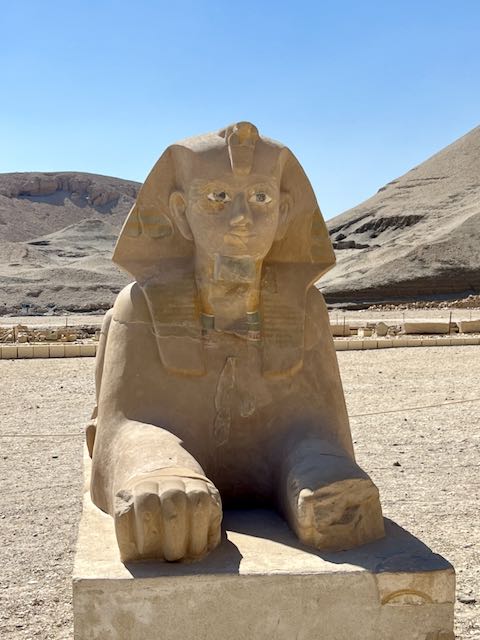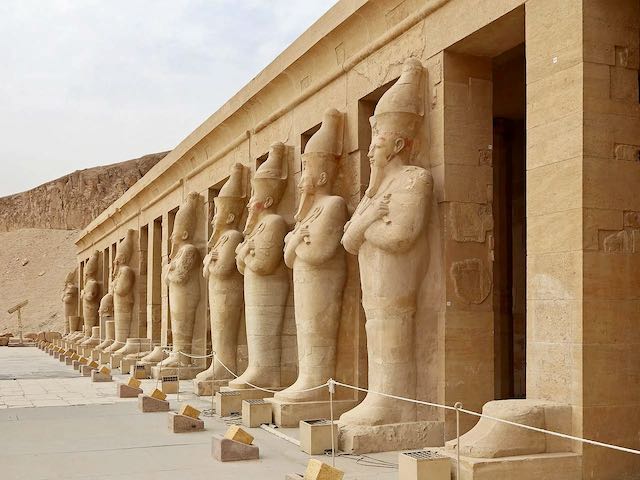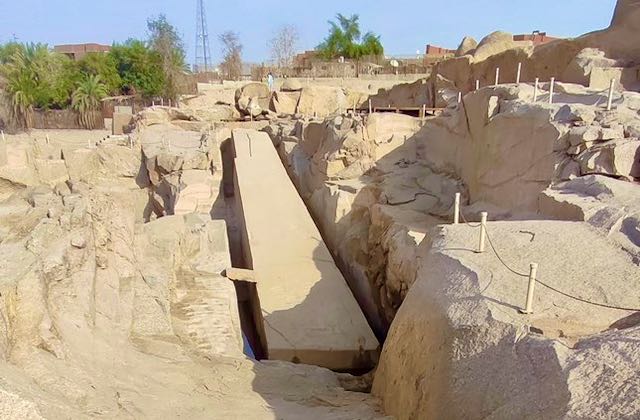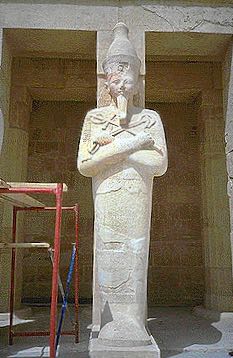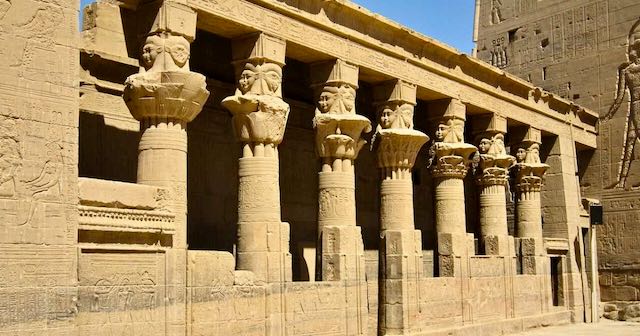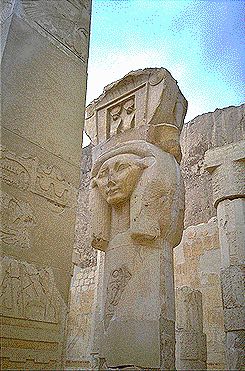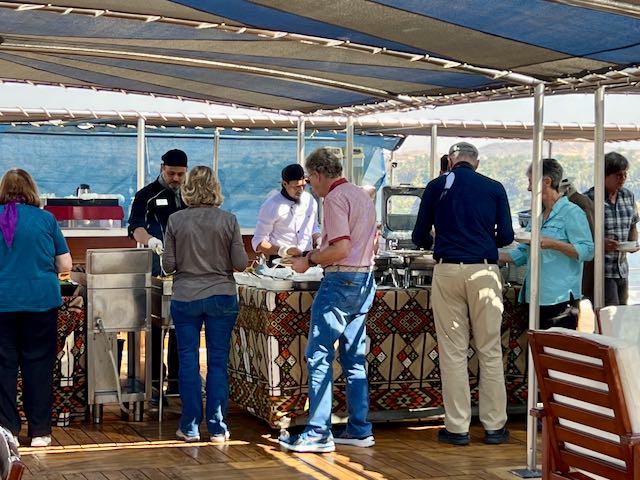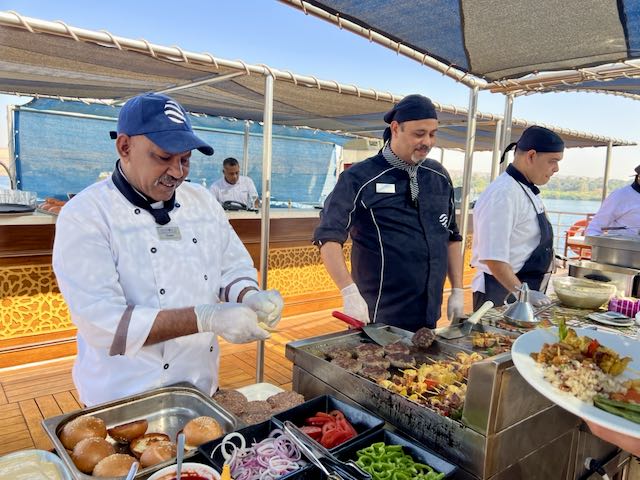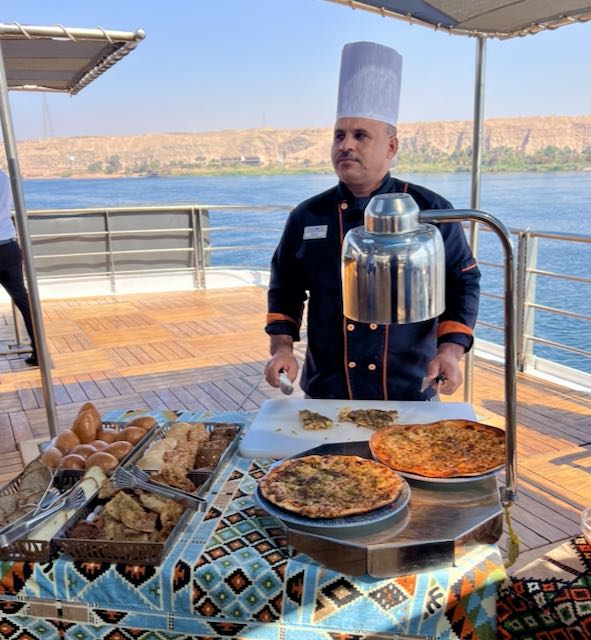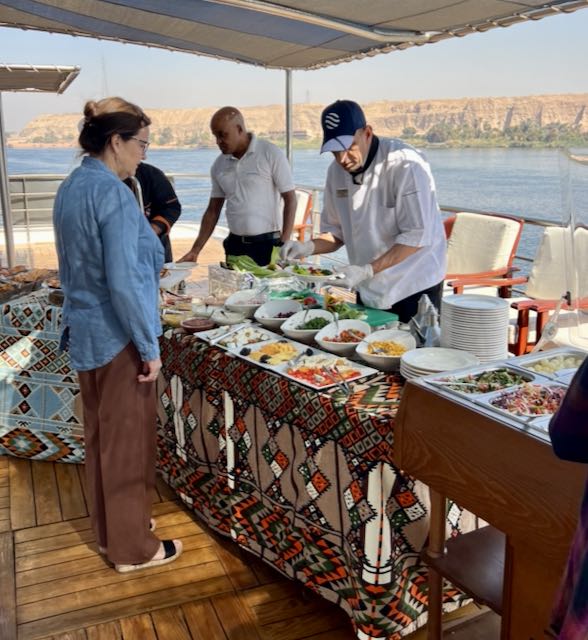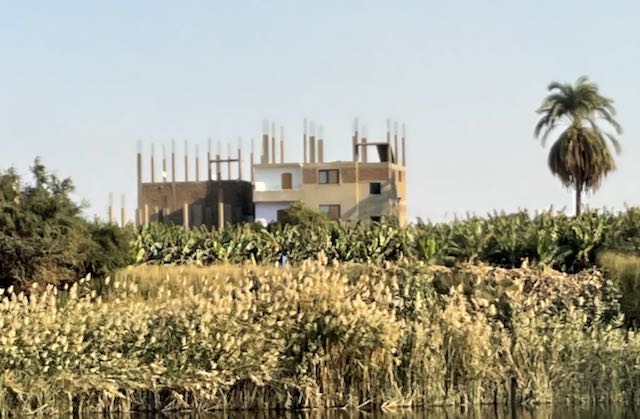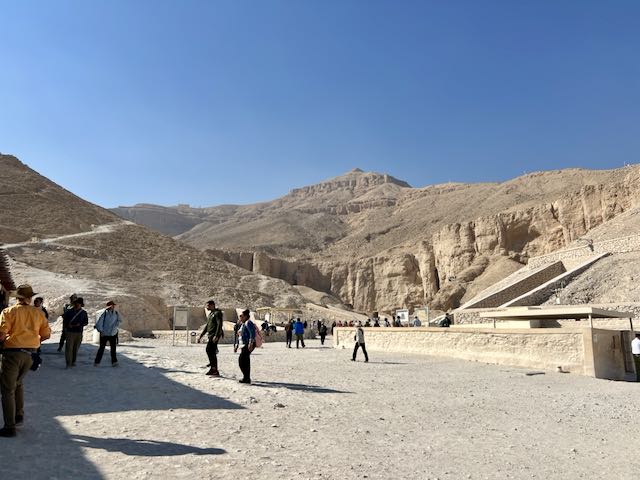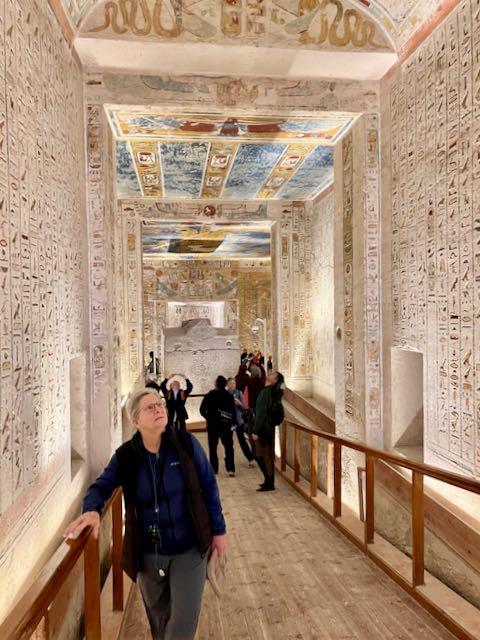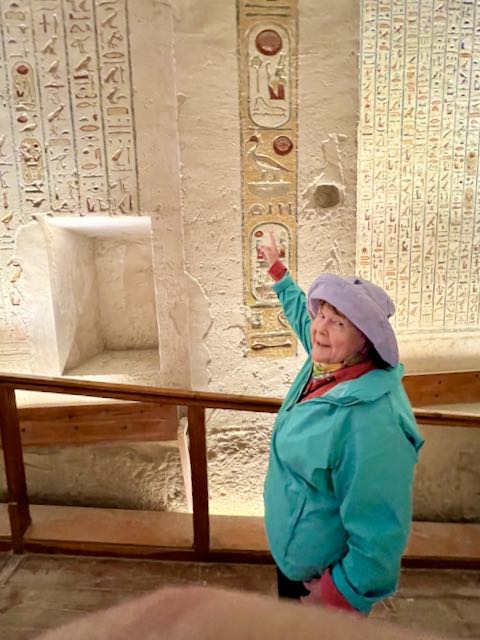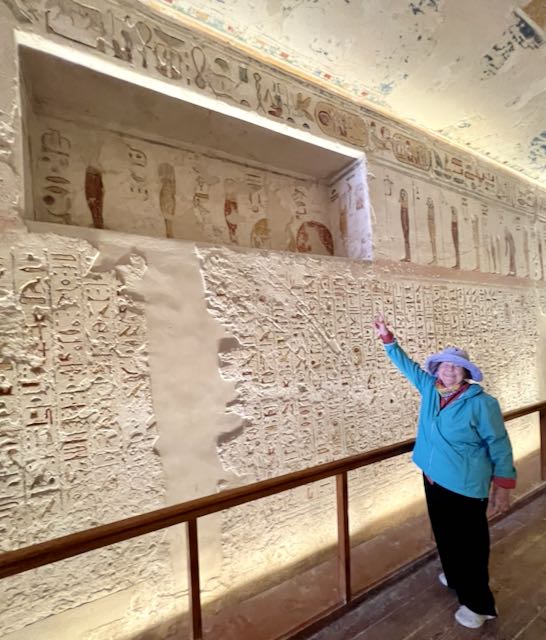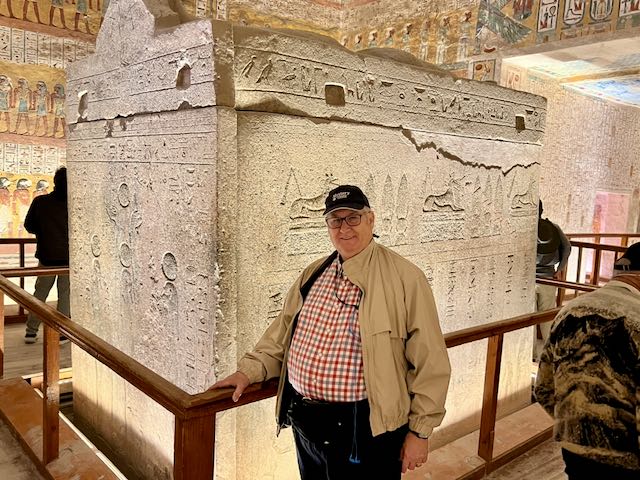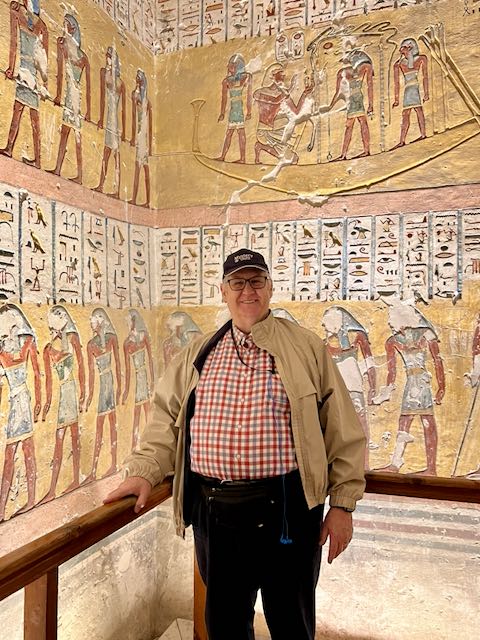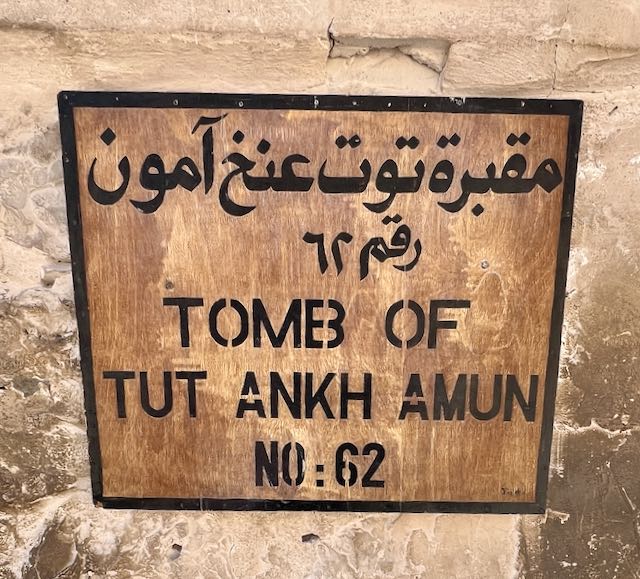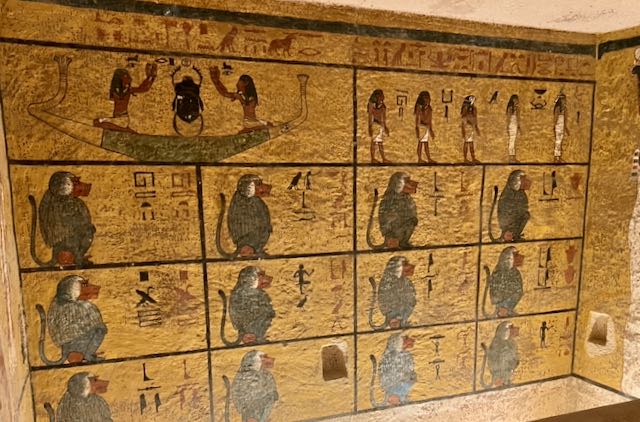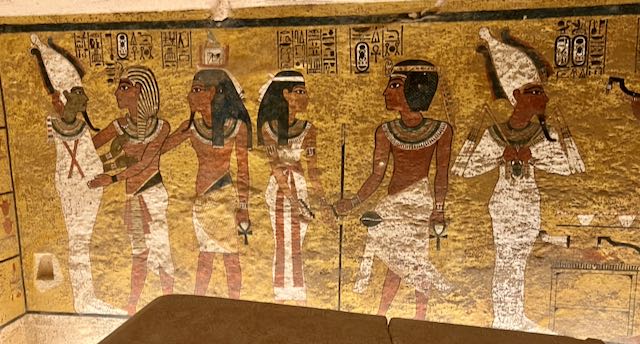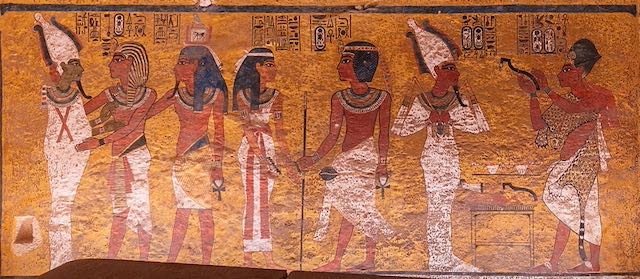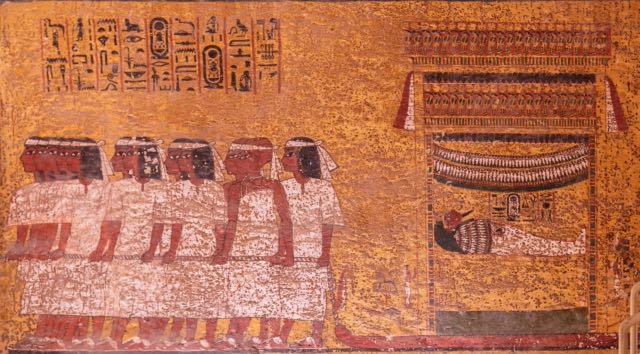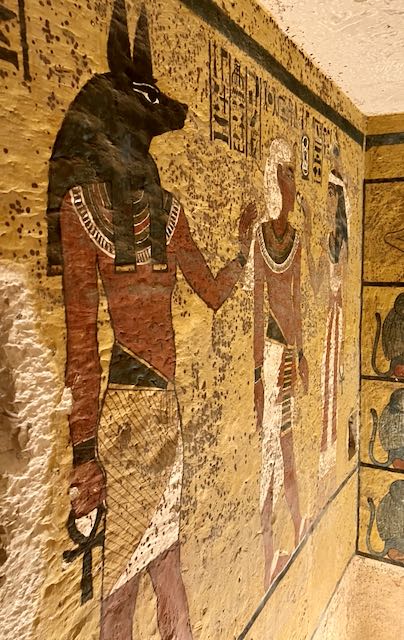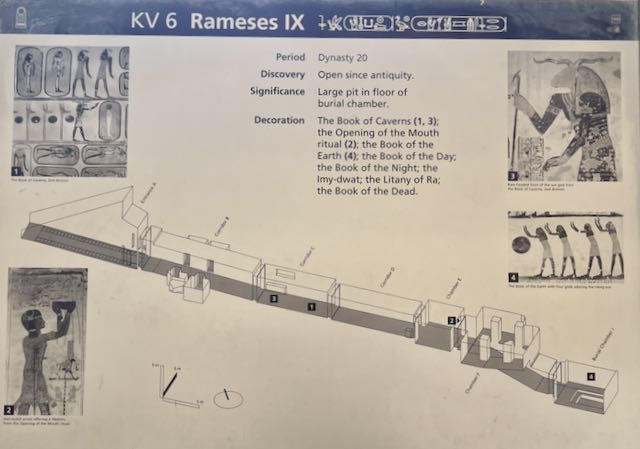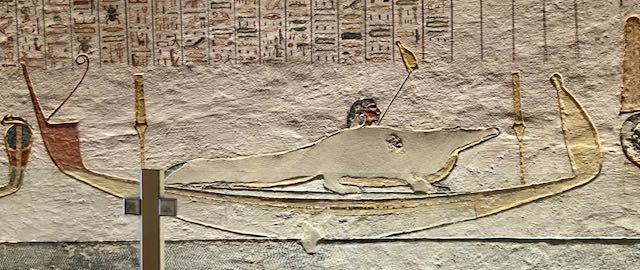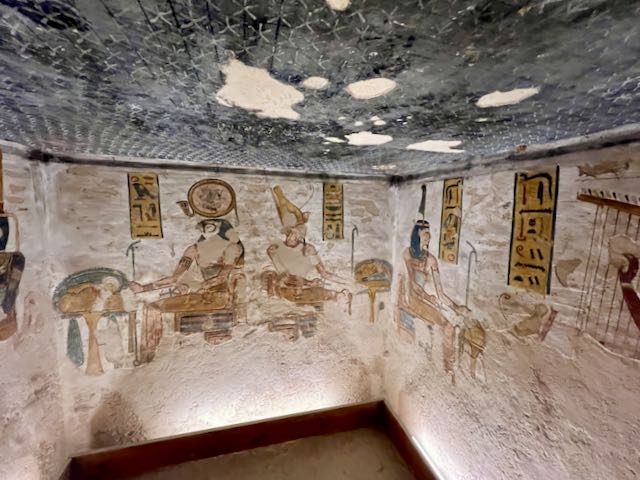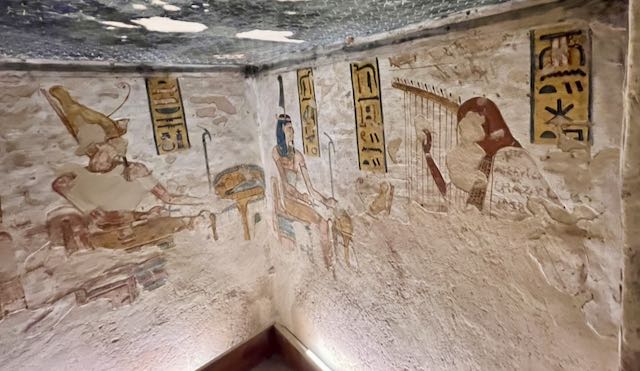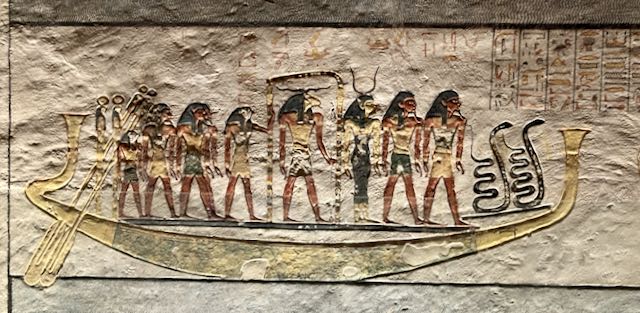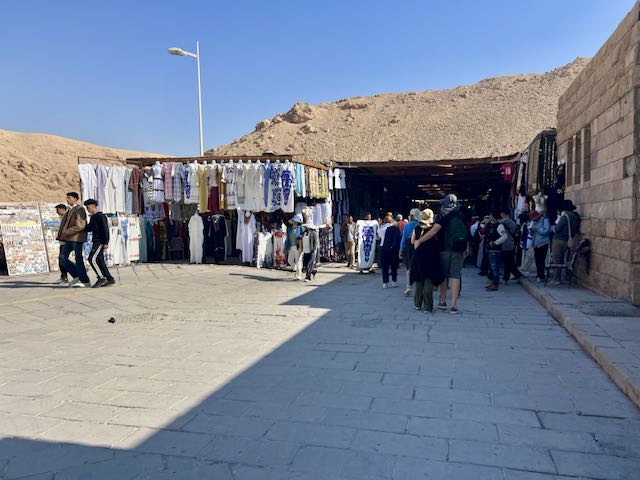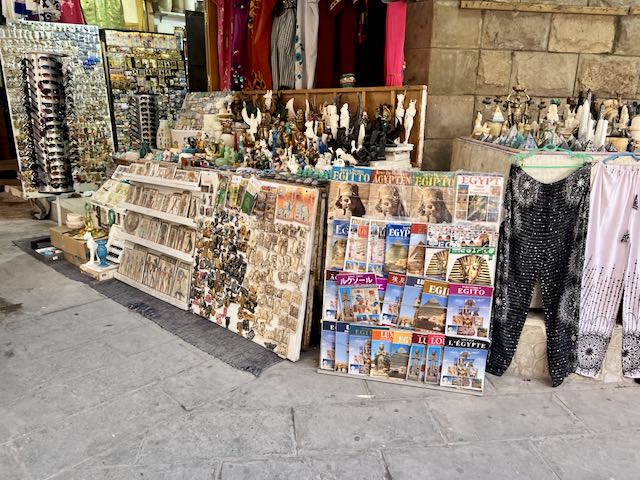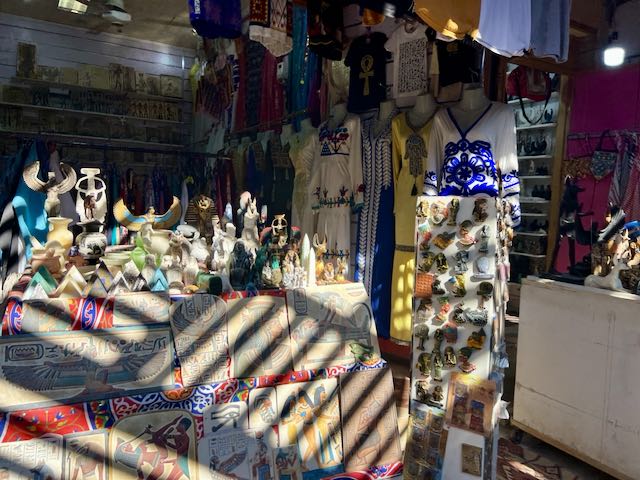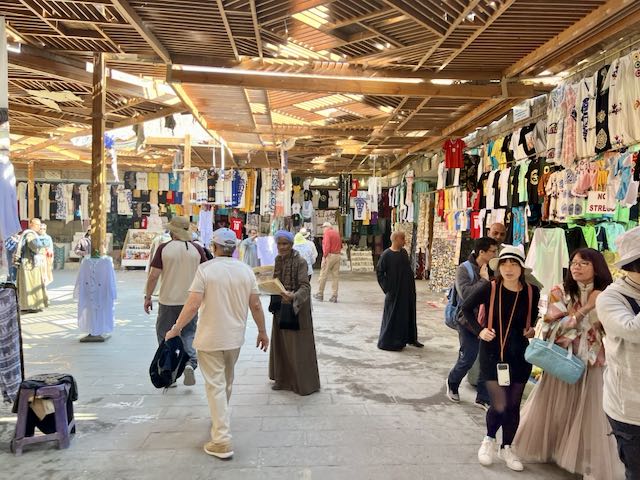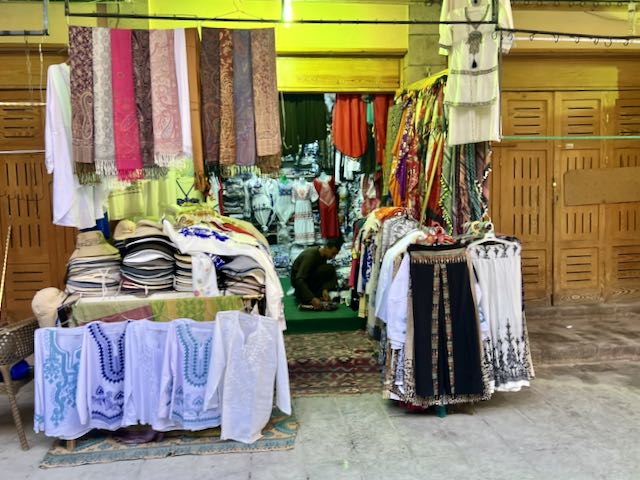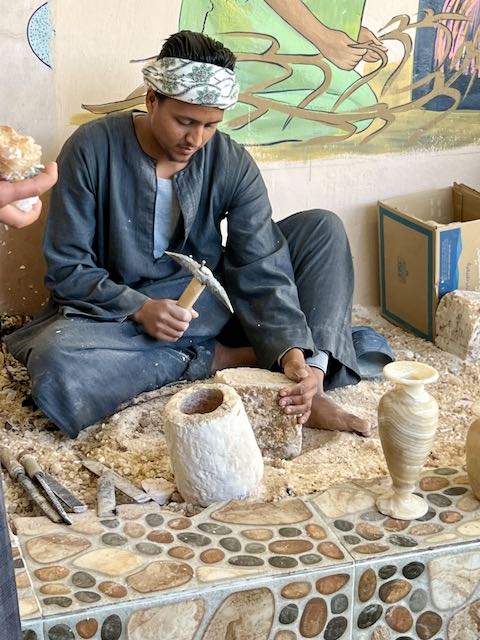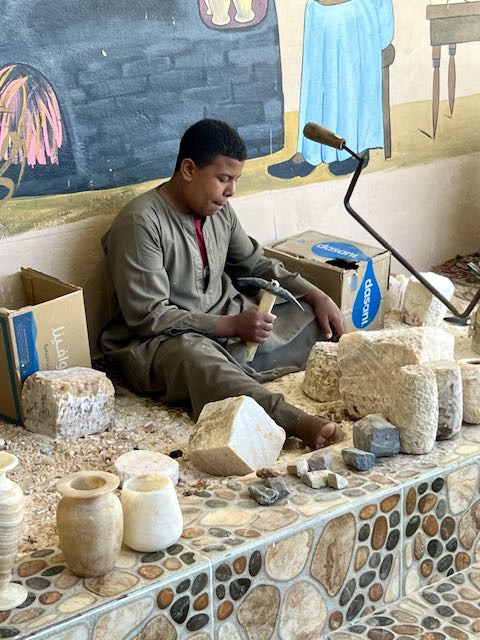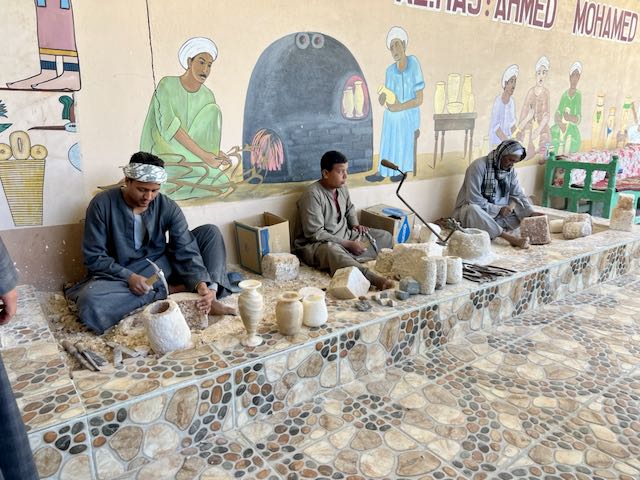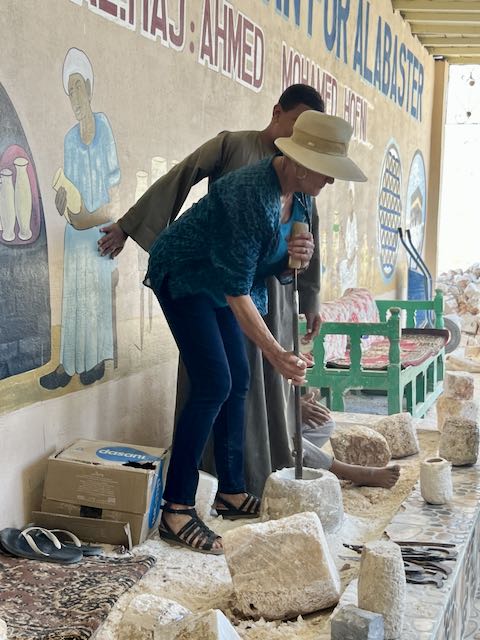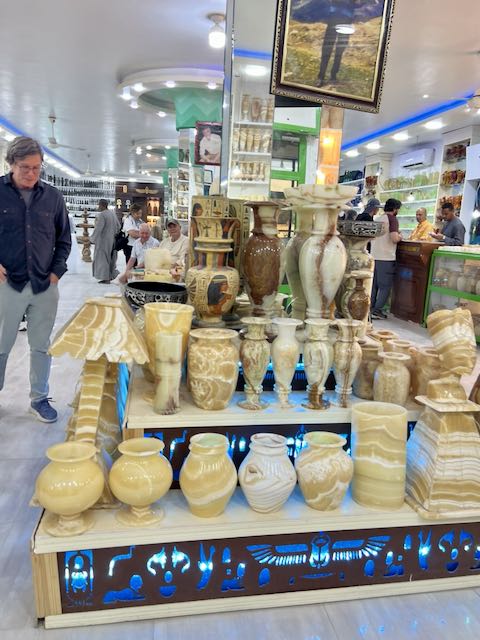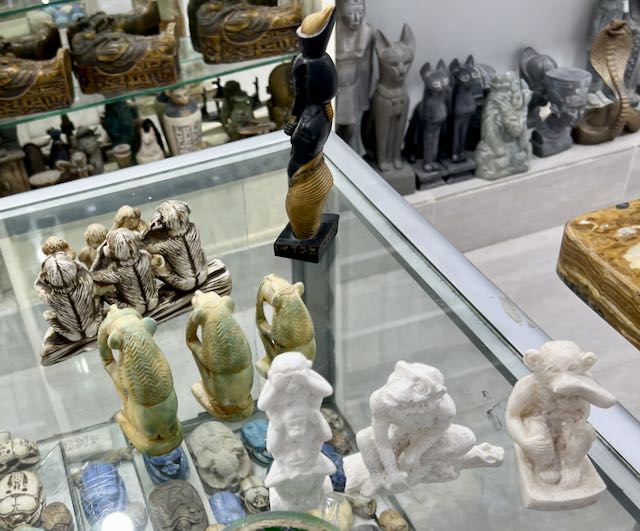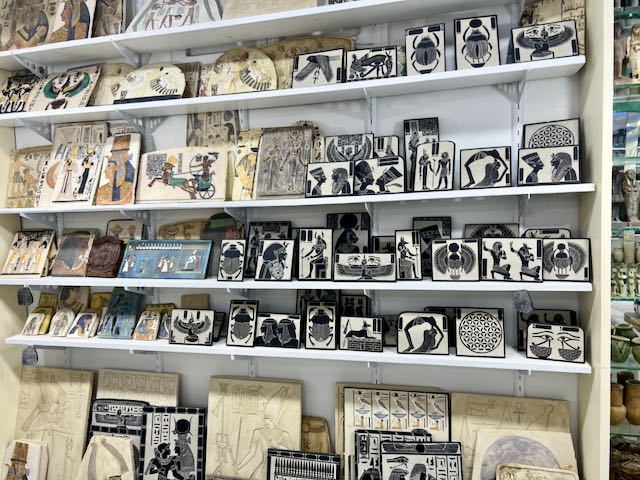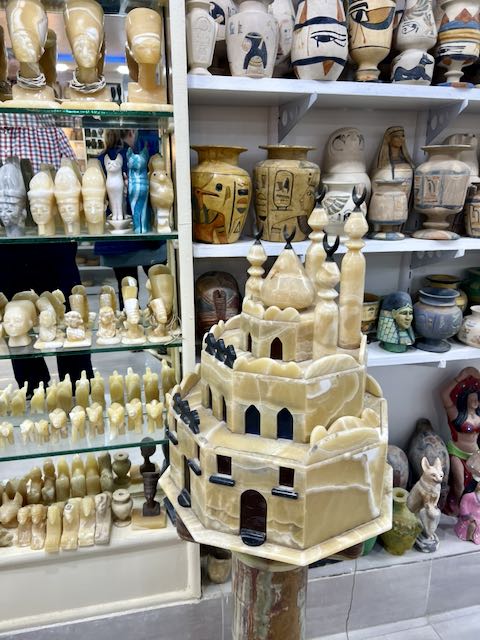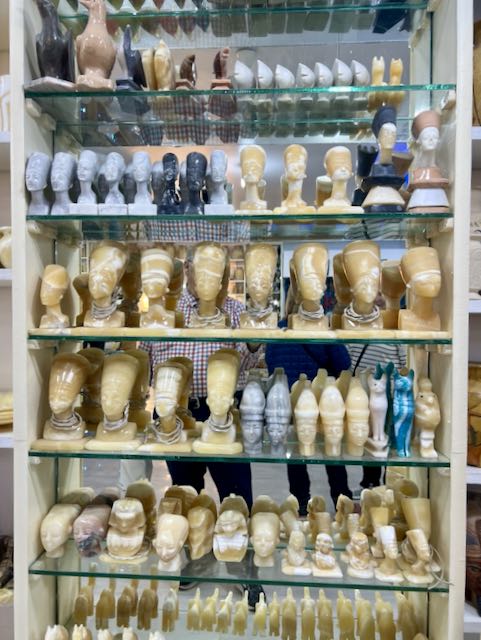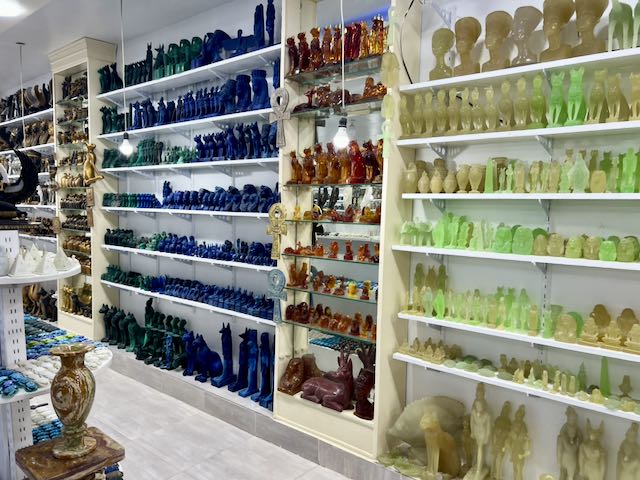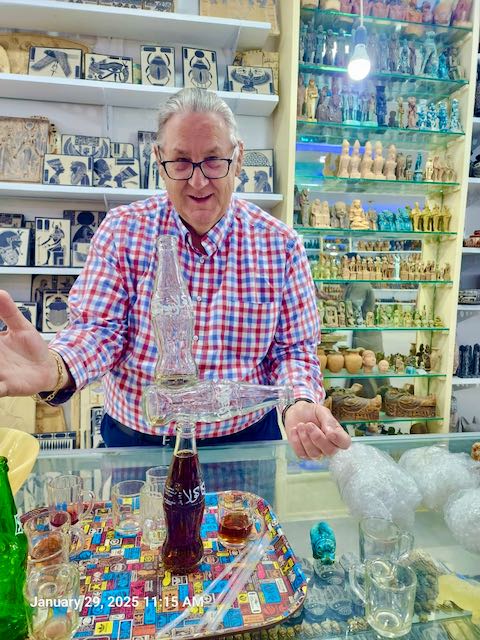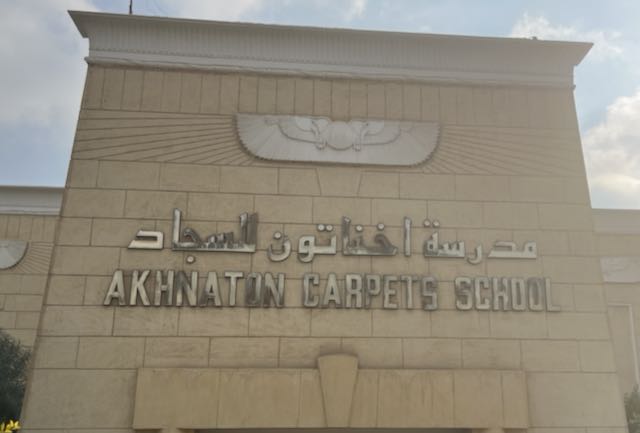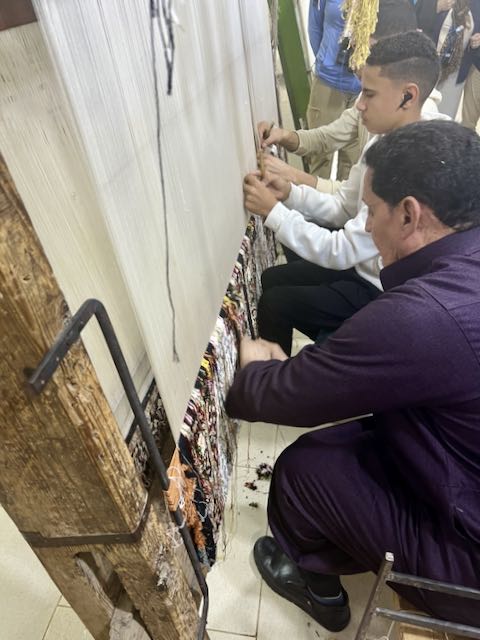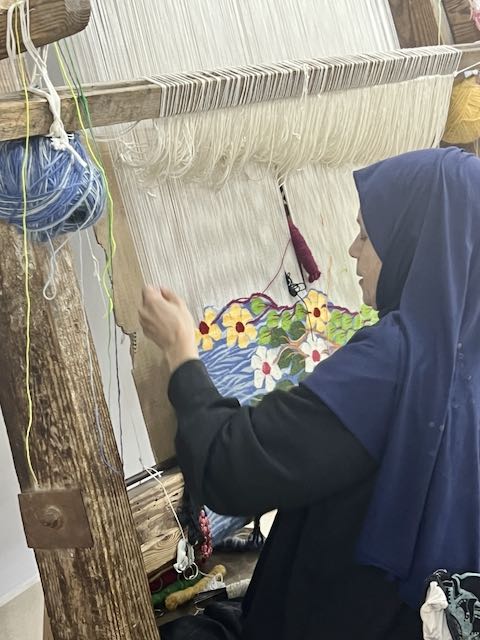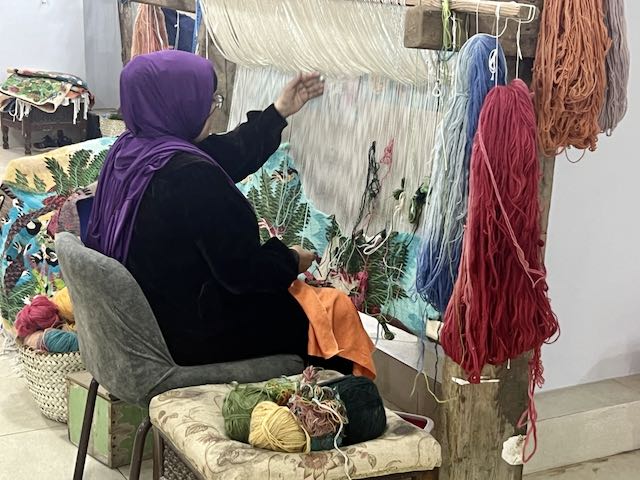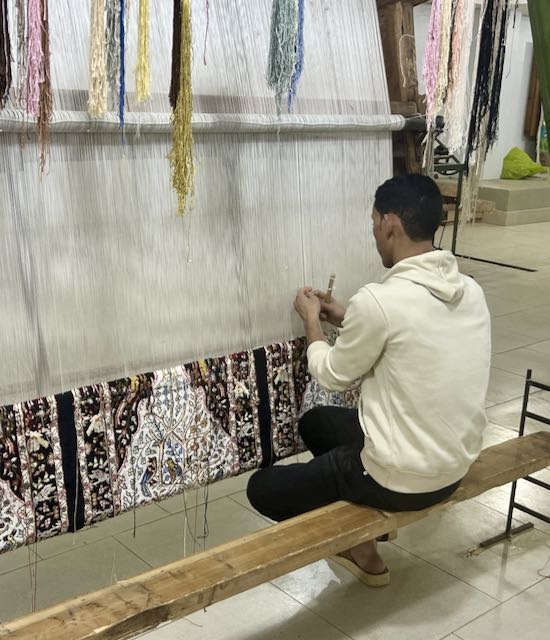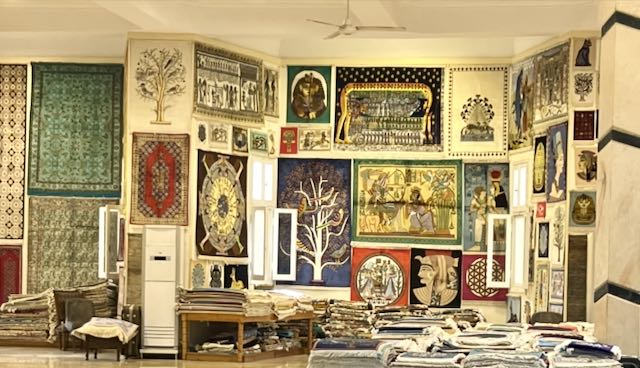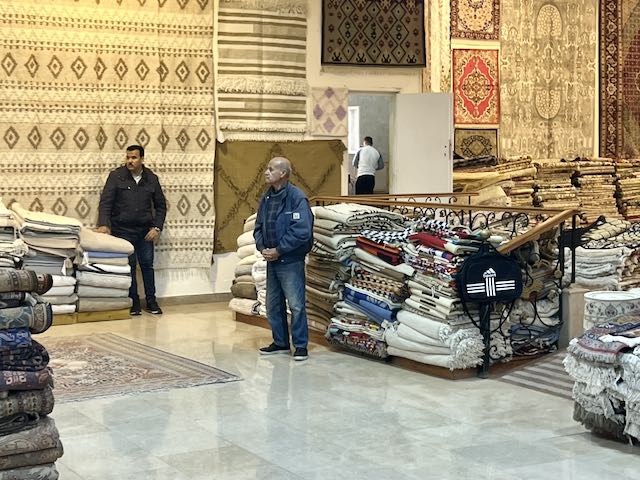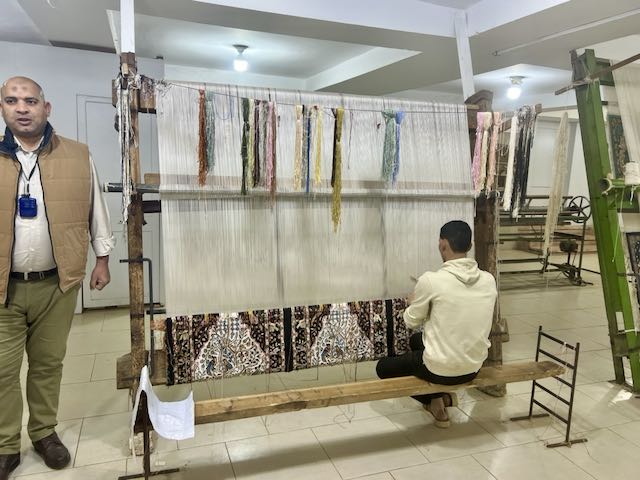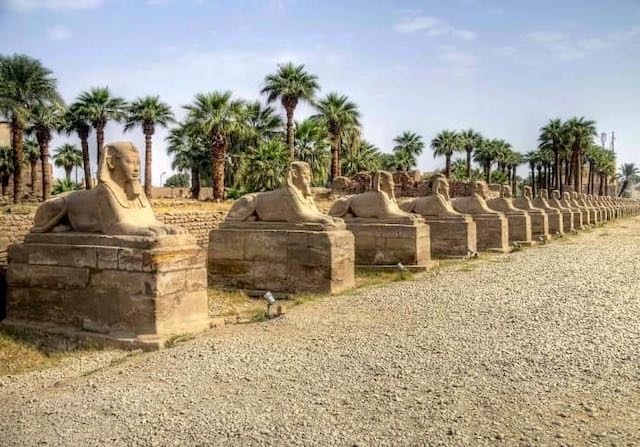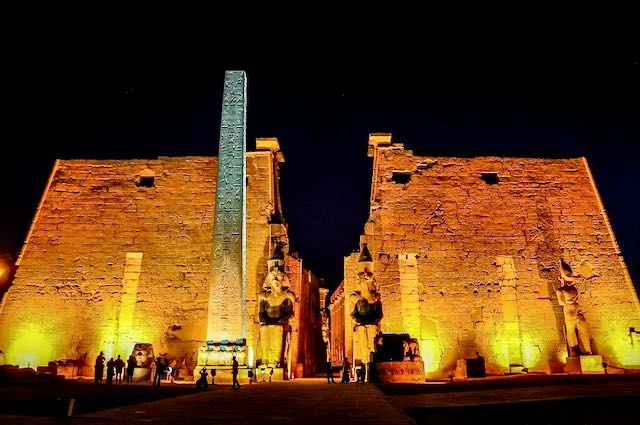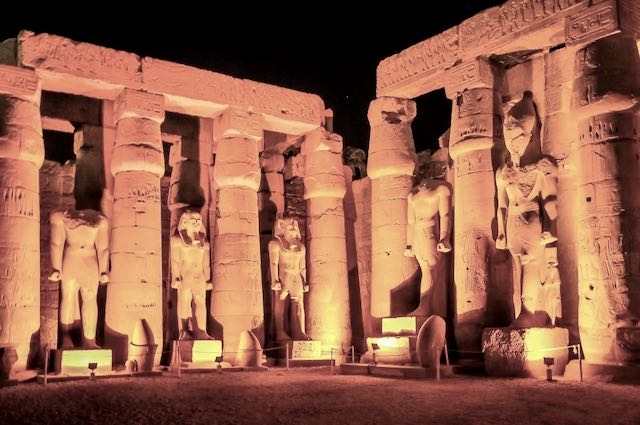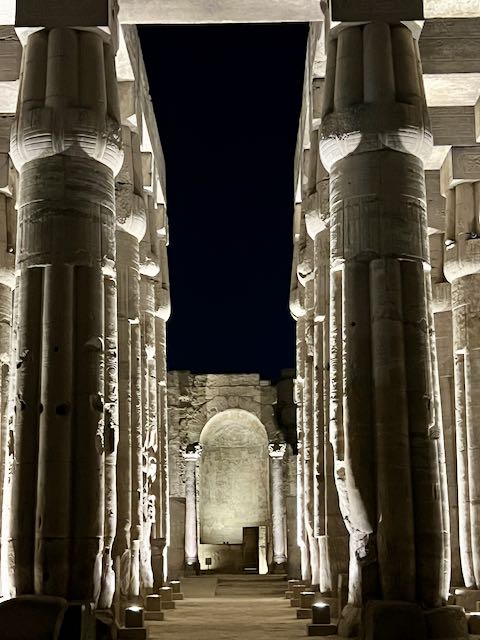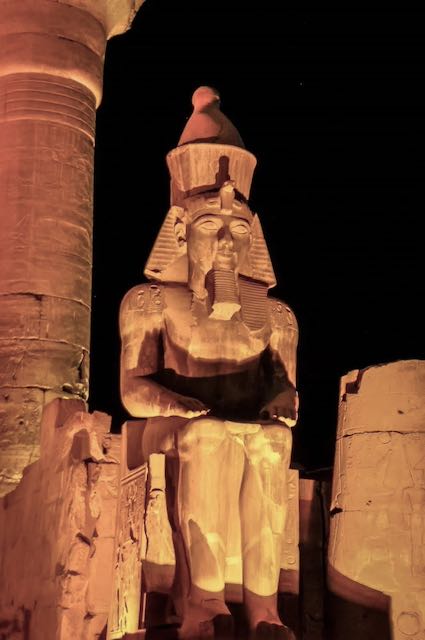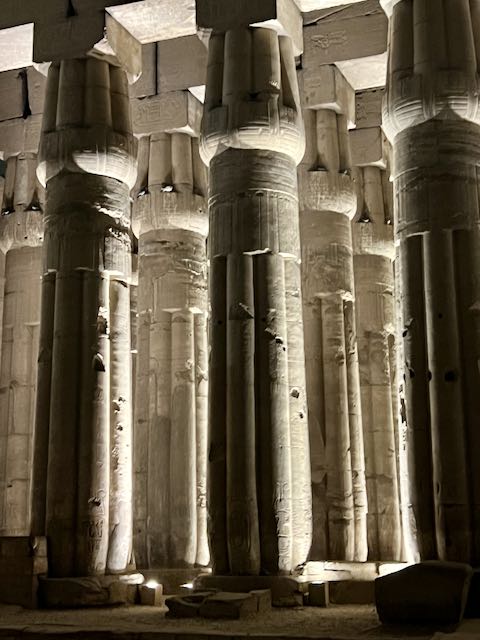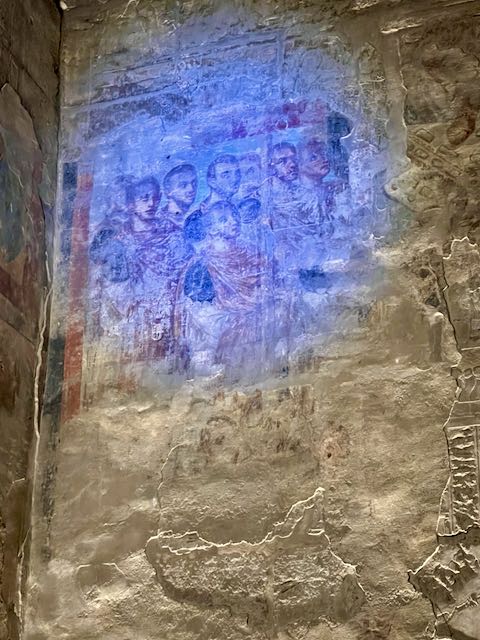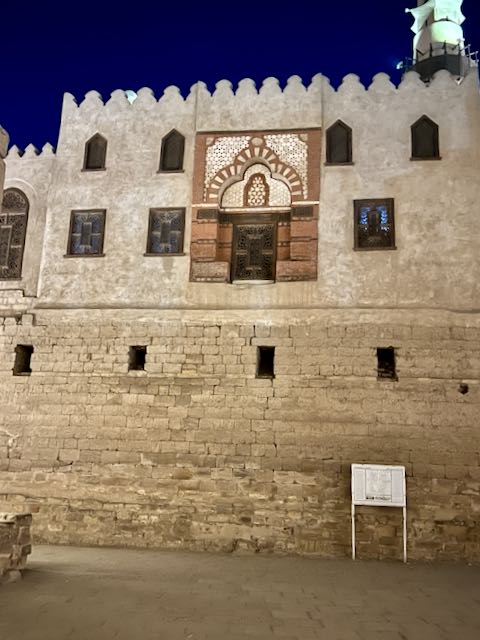OK, another day another temple. This time the Temple of Kom Ombo. This one is a bit unusual as it is a double temple having been constructed during the Ptolemaic dynasty, 180–47 BCE with some additions to it made later during the Roman period.
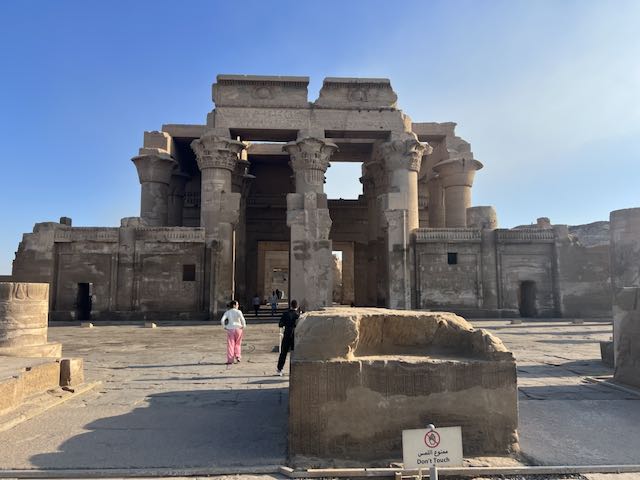
The building is unique because its ‘double’ design meant that there were courts, halls, sanctuaries and rooms duplicated for two gods. The southern half of the temple was dedicated to the crocodile god Sobek, god of fertility and creator of the world with Hathor and Khonsu. Meanwhile, the northern part of the temple was dedicated to the falcon god Haroeris (“Horus the Elder”), along “with Tasenetnofret (the Good Sister, a special form of Hathor or Tefnet/Tefnut) and Panebtawy (Lord of the Two Lands)”. The temple is atypical because everything is perfectly symmetrical along the main axis.
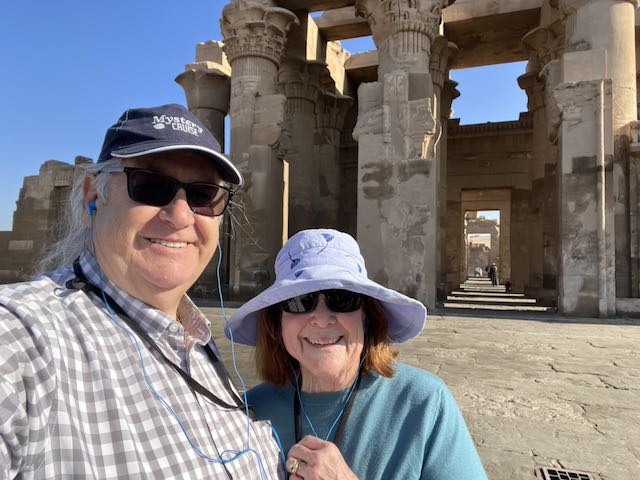
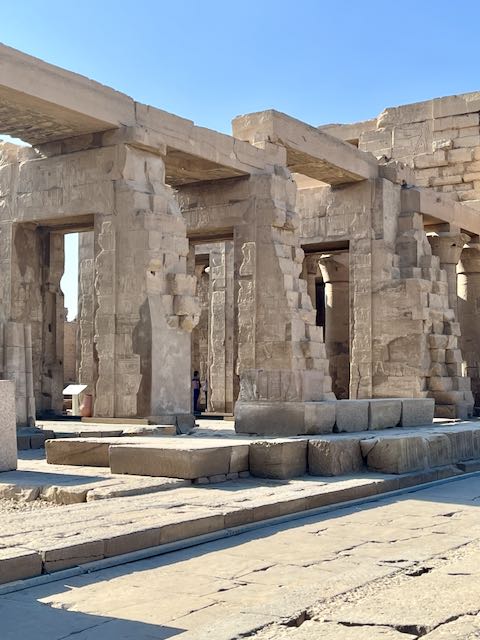
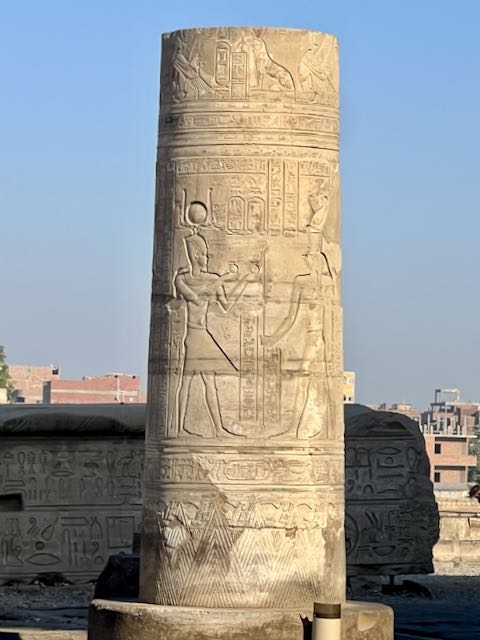
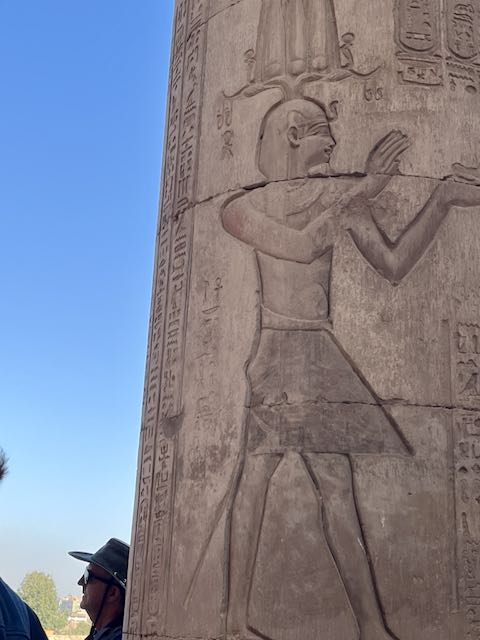
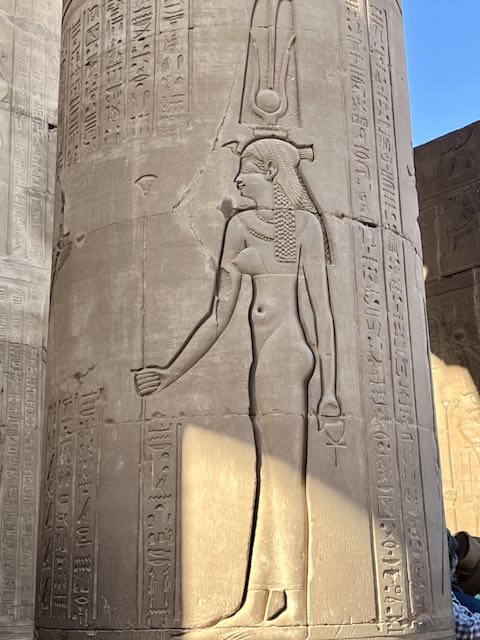
S.S.Sphinx had docked quite close to the temple so we had a walking tour to get to it. Much of the temple has been destroyed by the Nile, earthquakes, and later builders who used its stones for other projects. Some of the reliefs inside were defaced by Copts Christians who once used the temple as a church. All the temple’s buildings in the southern part of the plateau were cleared of debris and restored by Jacques de Morgan in 1893.
One of the very common building techniques was to connect blocks of stone with a ‘staple’ a piece of wood which would keep the two stones from moving apart. We saw this in virtually every site. At this one, interestingly enough, one of these ‘staples’ has been preserved.
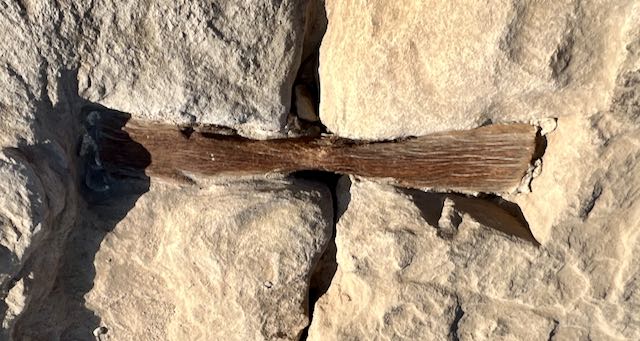
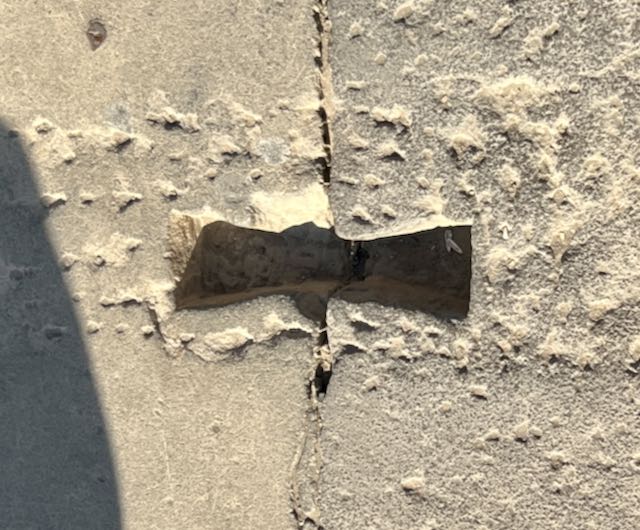
Every temple is adorned with texts and reliefs and generally refer to cultic liturgies which were similar to those from that time period. In this temple, there is a very interesting one which depicts Surgical Instruments. This unique scene was most likely carved between the reigns of Roman Emperors Antoninus Pius and Macrinus (138 – 218 CE).
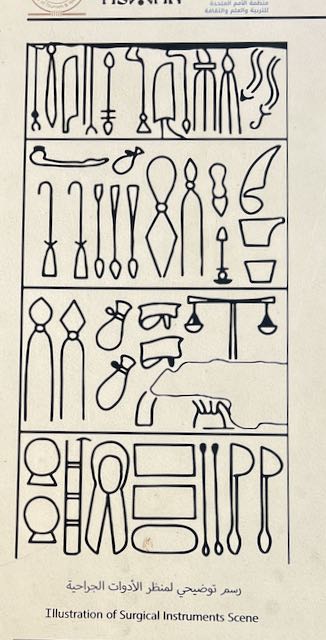

The depicted medical and surgical instruments include scalpels, saws, hooks, forceps, scales, a sponge, and various vessels.
Temples were generally accessible only to the priesthood and to allow regular people to pray to its main god(s), a temple could have what’s called a chapel of the hearing ear.

Located in the center of the back wall of the temple is a niche which once contained a figure of Maat, the goddess of order and justice and two ears flank the niche, reflecting the chapel’s purpose to allow the gods to perceive the prayers of the pious. The priest would be able to hear the prayers and would then be able to respond directly which usually required a tribute to be made to the temple.
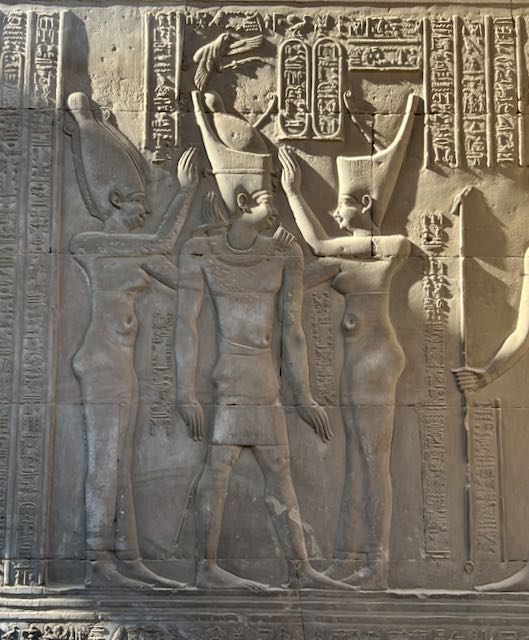
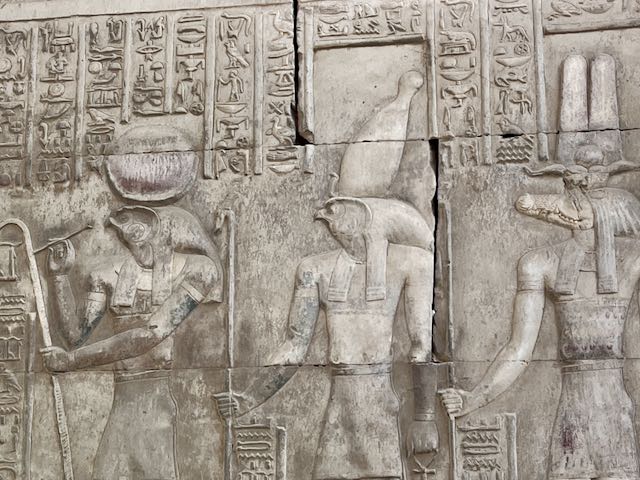
Crocodile god Sobek on the far right.
As mentioned above, the temple was partially dedicated to the crocodile god Sobek. There was a small chapel, dedicated to Sobek alone, just a short distance northwest of the main temple. Next to this temple, there is a rock-cut pit lined with quarried stone blocks and some scholars have suggested that this is a cistern, but others believe it was a sacred chamber in which a living crocodile, earthly incarnation of Sobek himself, was kept. Regardless, the bit was connected to the Nile and it was possible for a crocodile to navigate along the connection and end up in the ‘pool’. These crocodiles were considered ‘sacred’ and when they died were mummified.
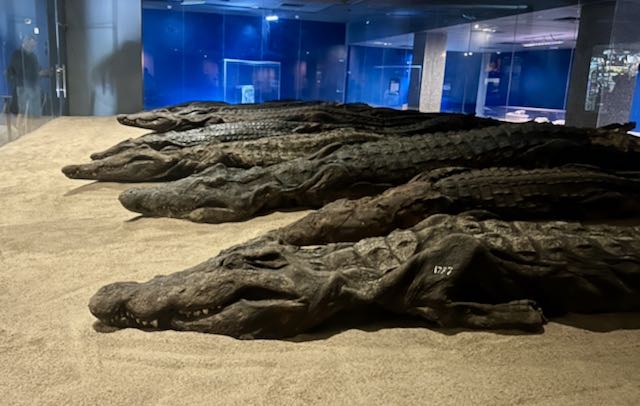
A few of the three hundred crocodile mummies discovered in the vicinity are displayed in the Crocodile Museum (connected to the site). Janeen informed our Egyptologist, Assem, this was not Our first mummified crocodile, as one hangs in Strasbourg, Au Crocodile Restaurant, brought back to France by one of Napoleon’s generals.
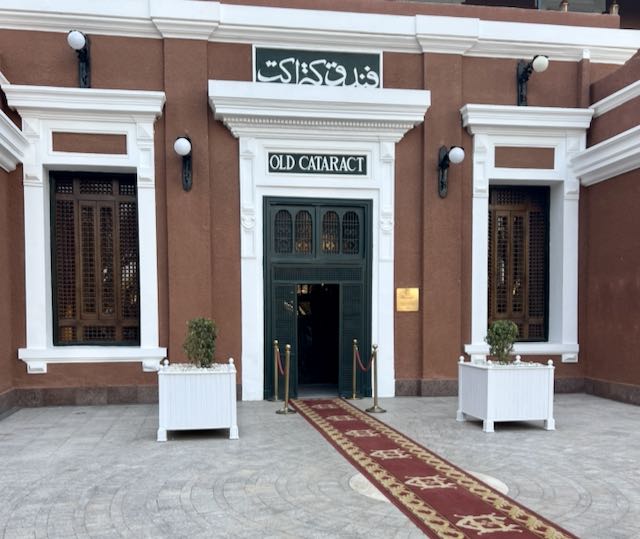
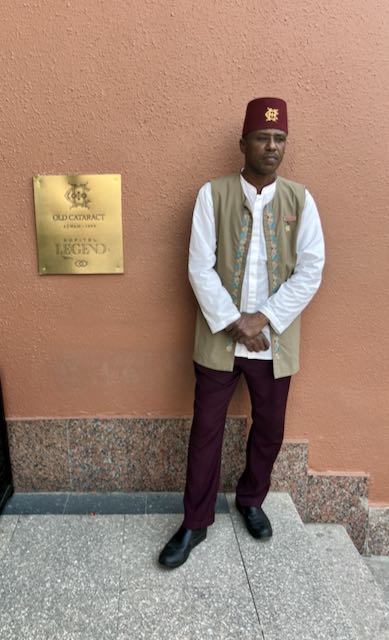
After we finished our tour, back on the ship, we had a lovely lunch and for afternoon tea we went to the Cataract Hotel. Built in 1899 to house European travelers to the area, guests have included a number of notable people over the years included Tsar Nicholas II, Winston Churchill, Howard Carter, Margaret Thatcher, Jimmy Carter, François Mitterrand, Princess Diana and Agatha Christie to name just a few.
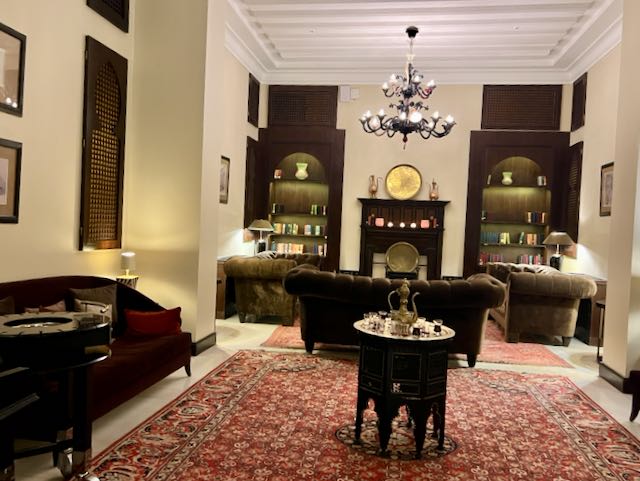
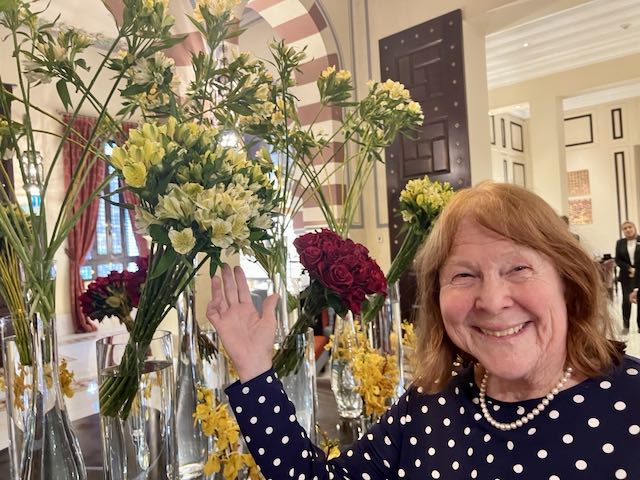
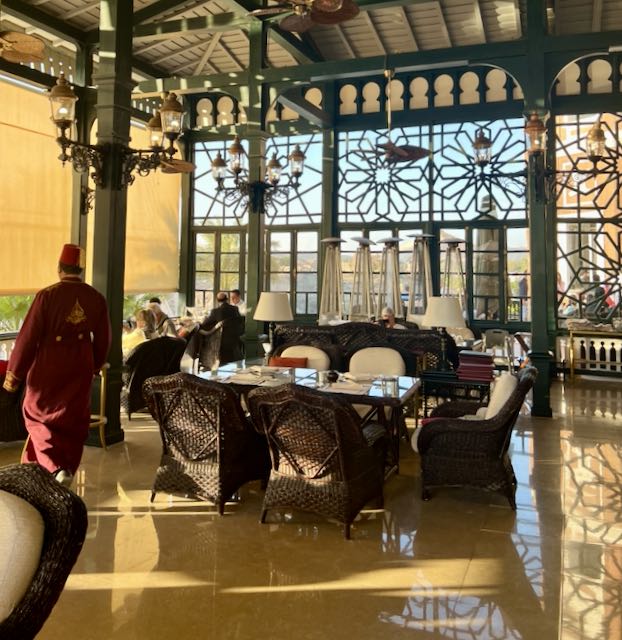
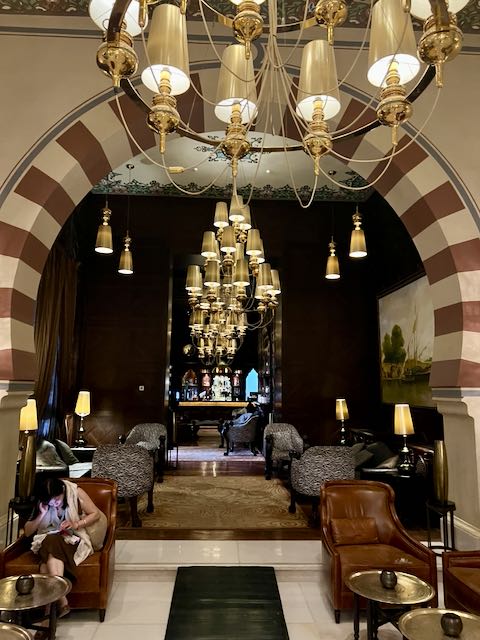
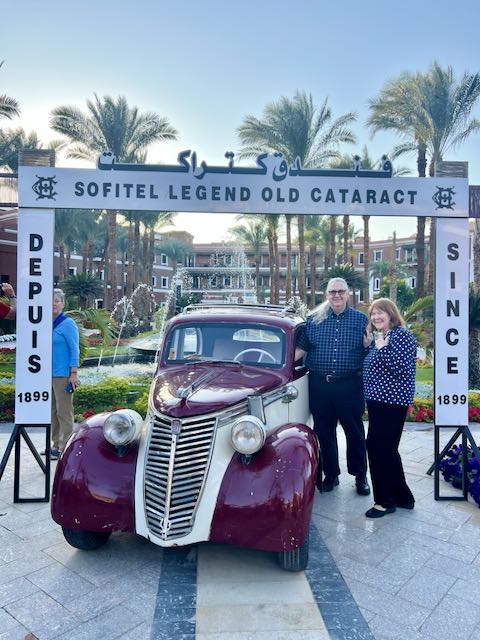
Agatha Christie spent several months in the Hotel writing her novel Death on the Nile and the hotel was used in the 1978 film of the novel. Our afternoon tea was enjoyable as we watched the sun set in the west across the Nile with Felucca sails gathering the afternoon breeze.
